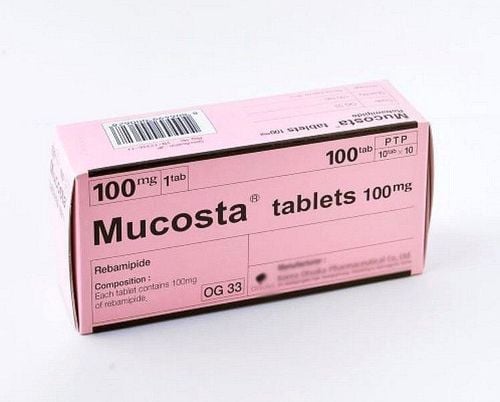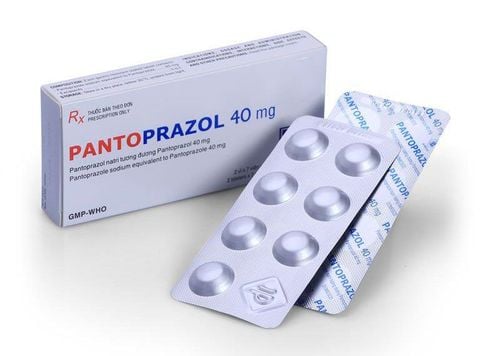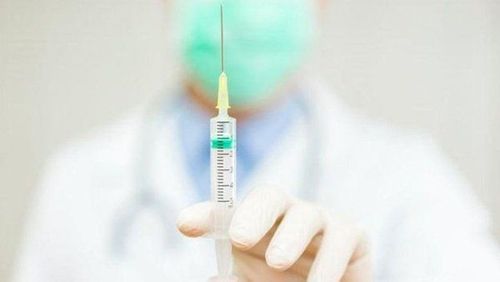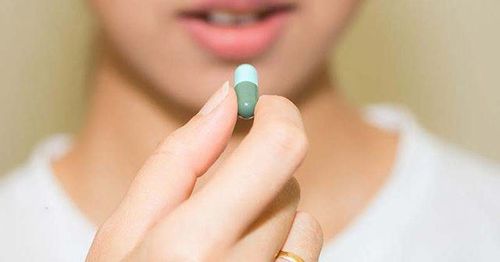This is an automatically translated article.
Famotidine has the main ingredient Famotidine and other excipients. The drug works well in reducing stimulated gastric secretion and basal gastric juice by antagonizing histamine at the H2-receptor in the parietal cells in the gastric mucosa.
1. Pharmacokinetics of Famotidine
Absorption: Daily use of food or antacids at the same time has no effect on the absorption of Famotidine. When taken orally, the effect of the drug develops after 1 hour and lasts for 10-12 hours. After intravenous administration, the maximum effect is reached within 30 minutes. The bioavailability of Famotidine is 40-50%.
Distribution: Famotidine is bound to plasma proteins at an average of 50%, the drug crosses the cerebrospinal fluid, placenta and breast milk.
Metabolism: Famotidine is metabolized by the liver about 30%.
Elimination: Famotidine is excreted by the kidneys over 60% as unchanged drug, the mean half-life is 2.3-3.5 hours; but if the creatinine clearance is 10ml/min, the half-life can be extended up to 20 hours; 30-35% of an oral dose and 65-70% of an intravenous dose are eliminated by the kidneys as unchanged drug.
2. Uses of the drug Famotidine
Famotidine has a chemical formula similar to histamine, so H2-histamine antagonists compete with histamine at the H2 receptor in gastric parietal cells, thereby preventing gastric secretion by causes of increased histamine secretion. in the gastric mucosa.Famotidine reduces the ability of gastric juice to secrete both quantity and concentration of HCl.
Famotidine has the ability to reduce the secretion of gastric acid, which is stimulated to increase secretion by histamine, gastrin, parasympathomimetic and X-nerve stimulant. The ability to reduce gastric acid secretion of the drug Famotidine approx. ninety four%.
The excretion of other digestive juices and the function of the stomach are less likely to be affected by the drug.
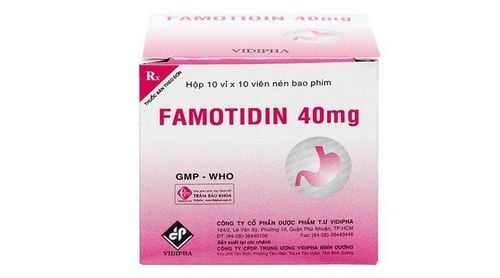
thuốc Famotidin có tác dụng tốt trong việc làm giảm tiết dịch vị
3. Indications of the drug Famotidine
Famotidine is indicated for the treatment of the following conditions:
Benign active gastric ulcer and active duodenal ulcer; Gastroesophageal reflux disease ; Diseases of increased secretion in the gastrointestinal tract such as Zollinger - Ellison syndrome, multiple endocrine neoplasia;
4. Contraindications of Famotidine
Famotidine is contraindicated in people who are allergic or hypersensitive to the components of the preparation.
Use with caution in those who have a symptomatic response to Famotidine that does not exclude the malignancy of peptic ulcer disease. Famotidine should be used with caution in patients with renal impairment (i.e. creatinine clearance less than 10 ml/min) because the drug is eliminated primarily by the kidneys. It is necessary to reduce the therapeutic dose or increase the interval between doses.
Unless instructed by the treating doctor, self-medicating patients should stop using the drug if there are still symptoms such as heartburn (chest burning), increased secretion of gastric acid, stomach pain after having been treated with Famotidine continuously for 2 weeks without any improvement.
During pregnancy Studies conducted in animals have shown no harm to the fetus. But that doesn't mean it's safe for people, the drug is only used during pregnancy when absolutely necessary and after weighing the benefits and risks by the treating doctor.
Lactation period Famotidine drug has the ability to be excreted in breast milk. The mother should stop breastfeeding during the period of taking the drug, or completely stop using the drug.
5. Undesirable effects of Famotidine
Undesirable effects of Famotidine are common in clinical practice such as:
Headache, dizziness, dizziness. Digestive disorders: long-term constipation, diarrhea. Undesirable effects are less common such as:
Fever, fatigue, body weakness. Heart rhythm disturbances. Cholestatic jaundice, liver enzyme abnormalities, nausea, vomiting, loss of appetite, abdominal pain, dry mouth. Anaphylaxis, angioedema, eye edema, facial edema, skin rash, urticaria, rash, conjunctival congestion. Musculoskeletal: musculoskeletal pain including cramps, arthralgia. Generalized convulsions, mental disorders such as: Hallucinations, confusion, agitation, depression, anxiety disorders, sexual impairment. Bronchospasm. Loss of taste and tinnitus. Rare adverse effects
Decreased granulocytosis, pancytopenia, decreased white blood cell count and thrombocytopenia. Skin signs: toxic skin necrosis, hair loss, acne, itching, dry skin, flushing. In men can be impotence, gynecomastia in men.
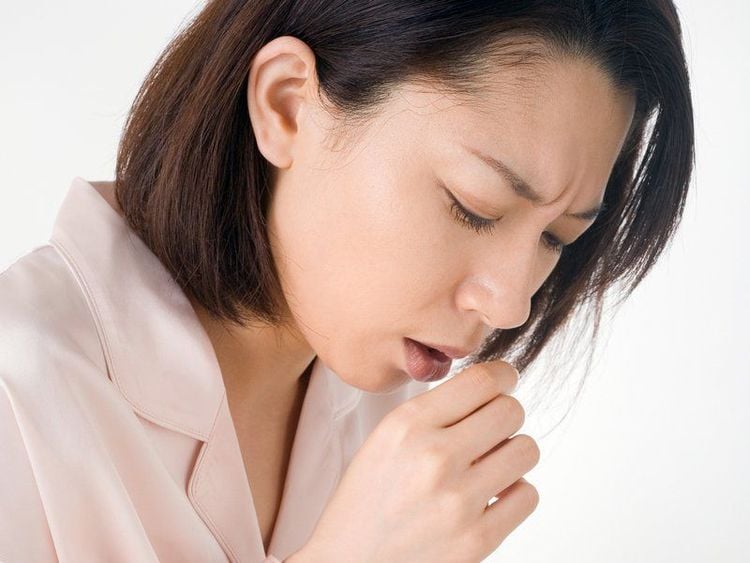
Tác dụng không mong muốn của Famotidin có thể gây ra tình trạng co thắt phế quản
6. Dosage, how to use Famotidine
6.1. How to take Famotidine Famotidine is usually taken orally. However, it is still possible to administer the drug by slow intravenous injection or slow intravenous infusion in patients with hyperacidity or persistent duodenal ulcer or who are unable to swallow. Famotidine can be combined with antacids with analgesic effect if needed.
Stomach ulcers are usually caused by Helicobacter pylori (HP bacteria). The process of stomach and duodenal ulcers can heal after completely killing this type of bacteria. Antacids in combination with antibiotics are highly effective in treating the disease.
6.2. Dosage of Famotidine 6.2.1. Oral Dosage Treatment of Acute Duodenal Ulcers: The oral dose for adults is 40 mg once daily at bedtime. Most of the disease will be cured after about 4 weeks, some very rare need longer treatment time from 6 to 8 weeks, can be used 20 mg x 2 times / day.
Maintenance dose: 20mg/day, once at bedtime.
Treatment of acute benign gastric ulcer: The oral dose for adults is 40 mg/day, once at bedtime.
Treatment of gastroesophageal reflux disease - oesophagitis Oral dosage for adults is 20 mg x 2 times / day, lasting 6 weeks. The oral dose for people with erosive esophagitis with reflux is 20 or 40 mg twice daily for up to 12 weeks.
Treatment of gastric hypersecretion (Zollinger-Ellison syndrome, multiple endocrine neoplasia) Oral dose for adults with a starting dose in adults is 20 mg/times/6 hours, the dose can be started. higher in some patients, dose adjusted individually and prolonged use of the drug according to clinical indications. The treating physician may increase the dose to 160mg every 6 hours for some people with severe Zollinger-Ellison syndrome. At the same time, your doctor may prescribe an antacid if needed.
6.2.2. Dosage by parenteral route, intravenous infusion In patients with pathological hypersecretion of gastric juice or persistent ulcers or those who cannot drink, Famotidine injection / infusion at a dose of 20mg every 12 hours until it is possible to drink.
Intravenous injection: Dilute 1 ampoule of Famotidine (20 mg/2 ml) with 0.9% sodium chloride or famotidine compatible injection solutions to 5 or 10 ml by slow intravenous injection over a period of at least 2 Minutes. I 6.3. Cases of drug overdose Famotidine In patients with pathological hypersecretion of gastric juice who have taken up to 800mg of Famotidine/day, there have been no signs of severe toxicity.
Treatment: the usual measure is to remove the unabsorbed drug as soon as possible from the intestinal tract. Symptomatic and supportive treatment should be carried out immediately and monitored for clinical signs.
6.4. In case of forgetting a dose of Famotidine Add the dose of Famotidine as soon as you remember it. However, if it is too short to take the next dose, skip the missed dose and continue with the dosing schedule. Never use a double dose to make up for a missed dose.
7. Famotidine drug interactions
With food and antacids:
Food can slightly increase bioavailability and antacids slightly decrease the bioavailability of Famotidine, but these effects do not seriously affect the clinical effect. Famotidine can also be used in combination with antacids.
Effects of Famotidine on hepatic drug clearance:
Unlike drugs such as cimetidine and ranitidine, Famotidine does not affect the metabolism, clearance and half-life of aminophenazone or phenazone. However, the drug also has little effect on cytochrome P450 enzymes and more experience with long-term administration and relatively high doses is required to determine if any usefulness and clinically important effects. Famotidine did not affect the excretion of indocyanine green.
Understanding the use of Famotidine, will help the drug become more effective and safe for patients.
Please dial HOTLINE for more information or register for an appointment HERE. Download MyVinmec app to make appointments faster and to manage your bookings easily.




